#seeing as Mórrígan is from Irish mythology
Explore tagged Tumblr posts
Note
do all the role swap guys have new personas?? :o is it spoilers to ask what they might be?? i loved the ophelia idea
I can tell you! :D also thank you omg! Ophelia means a lot to me as a character and honestly I was just like WE NEED HER!!!! I AM PUTTING HER IN!!!!
all the personas in the roleswap AU are ones which have an element of either tragedy or strife to them, whether it's in their lore or their personality!
I've listed them below in the format of "[first persona] + [seconds persona unlocked at max friendship] + [third persona unlocked in third sem under certain conditions]" and a "?" just means I have yet to confirm what the persona is. if the person isn't listed it just means I haven't chosen any of their personas yet 😭
Haru can obviously use any persona because she's the wild card/fool but she still has her 3 personas just like Joker does in canon. Akira and Goro also keep their third personas for story purposes.
I'm also not explaining why I chose any of them (though I have linked their SMT wiki page if they have one!) but if you do want to know, send me an ask! :D
Haru: Eurydice + ? + ?
Akechi: Mórrígan + ? + Hereward
Futaba: Slammer (computer virus) + ? + ?
Morgana: ? + ? + Adam (NOT Adam Kadmon)
Makoto: Ophelia + Rapunzel + Vivian
Akira: Dick Turpin + ? + Raoul
Ann: ? / Medusa + ?
#IYR/RTG#anon#ask#if anyone has any ideas for personas you are absolutely 100% more than welcome to tell me!!!#especially if you can find a way to link Akechi's into an evolutionary line lol#I don't want to use Cu Chulainn but they might be the only fit :(#I was trying to find someone from Scottish or Welsh mythology#seeing as Mórrígan is from Irish mythology#and Hereward was an Anglo-Saxon#also Jazzy and I were this close to giving Futaba Among Us#someone suggested Carmen Sandiego for Ann and I don't know enough about CS but if anyone else wants to second their suggestion I'll listen!
29 notes
·
View notes
Note
Your blog is a good way for me to better understand some of the myth that Megaten seems to glance about, so I wanted to request one that confused me during personal research , Morrígan. I was hoping you could better understand this myth than I could.
Morrigan - Day 93 (Request)
Race: Flight
Arcana: Justice
Alignment: Neutral-Law
August 14th, 2024

God, I've put this one off long enough. Sorry, Kaiwan. Of the many faucets of celtic mythology- the cycles, the canons, the deities- the Tuatha Dé Danann are a rather prevalent and recurring factor. As famous heroes and the go-to gods of the Irish canon, their recurrence is of no surprise to most, and they are rather well known deities even outside of circles of the Celtic occult. Of course, that is rather relative, given how most people only know of Cú Chulainn or Fionn mac Cumhaill, but in terms of obscurity, the Tuatha Dé Danann are far from the bottom of the barrel. In this group, though, it's nowhere near as simple as most pantheons are (which is saying a lot, given how complicated almost every pantheon is,) and a prime example of this has to be today's Demon of the Day, Mórrígan, a goddess infamous for her strange existence.
Mórrígan, also called 'the Mórrígan,' is a deity who presides over war and death both. However, if you're familiar with some other demons throughout the series, that'll sound odd, right? After all, Badb Catha is the celtic god of war, at least according to the compendium entries. This is where the first major curveball regarding Mórrígan comes in, though- she's not just one being, rather, being a composite of several. The Mórrígan is less of a name of a single being and more of a title given to a trio of beings, generally agreed to be Badb Catha, Macha, and... Mórrígan, who may actually be named Anand. You can see why this is confusing, right?
I think the best way to describe this would be as follows: Mórrígan is a shared name between two things, being both a title for the three halves that make up the triple goddess the Morrígna, while one of those three halves is a goddess simply named Mórrígan. It's still very vague and hard to understand, though, as the concept of a triple goddess may also indicate a composite form, being all three beings being one at once while also being separate beings, but for the sake of this analysis (and my sanity) I'll be using the aforementioned explanation because it also lets me cover Badb Catha later on instead of having to cover it here.
Mórrígan herself is a goddess who resides over fate, death, and battle, and is one of the three aspects of the Morrígna. Differing sources portray her differently, though her general role as one who watches over and keeps track of the fates of those in battle is one that seems to be a common consensus. A lot about Mórrígan is highly rooted in ancient Celtic culture, which makes it a bit of a bitch to get into, as it's highly connected to concepts that are needed to understand her role as more than just a bloodthirsty war goddess. In a way, she seems to be more comparable to Athena, being a wise and powerful fate-spinner who nonetheless may have bloodlust when times turn to war. Of course, there are differences, as Morrigan takes a commonly far more antagonistic role in stories, though- one of those stories being none other than the Ulster Cycle.
Yep, we're bringing everyone's favorite Guard Dog into this mess. In the Ulster Cycle, Mórrígan appears as a fate spinner herself, and in the famous final battle of Cú Chulainn and Queen Meb, it was only when she arrived, in the form of a crow, and perched on his shoulder, that it was known that Cú had finally died. It's poetic, honestly, as her role as a goddess of fate and death came to a head in the end of the bloodiest battle of the cycle. Mórrígan is highly tied to concepts of fate, death, and battle, and it makes for a very fascinating deity. With all of this, though, one question remains- how is she portrayed in SMT?
Well, as an early-on design, it's pretty decent, but I struggle to find much correlation between Morrigan's Valkyrie-esque design and her generally darker, more sinister, mage-like design seen depicted frequently. However, this isn't to say I dislike it, as it does tie into her role as a war goddess, and the wings and bird tail adjacent back guard connect to the crow that is so often used to symbolize her. While a bit more archaic than most later-on Demon designs, I still do quite enjoy this one.
10 notes
·
View notes
Text
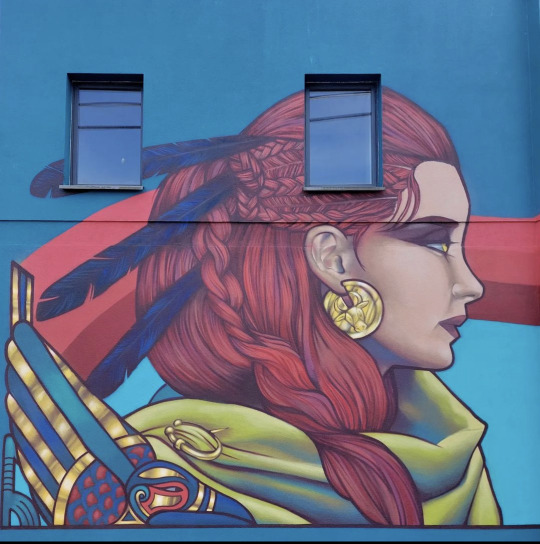


Credit: https://instagram.com/thisisfriz
From the artist's IG post:
"I was so happy when the good folk at the DRAWDA festival approached me with this brief. The Mórrígan, one almighty Goddess of War from Irish Mythology.
My depiction of her stems from her appearance in one of Ireland's most famous epic tales, An Táin Bó Cuailnge. When her amorous advances to the hero Cúchulainn are rebuffed she makes it her mission to become a thorn in his side. In this story she appears as a beautiful woman, a hag, an eel, a cow and a crow. In my mural depict her as the beautiful woman mirrored by her wolf self. Framed by an eel and crow that designed inspired by my recent trip to Trinity College to finally see the Book of Kells for reals."
#anmórrígan#anmorrigan#an morrigan#an Mórrígan#namorrígna#namórrígna#namorrigna#mural#thisisfriz#friz#irish artist#irish panganism#please note An Mórrígan is not a scorned Goddess though
25 notes
·
View notes
Text
SJM's pinterest board. ACOTAR 6/7.
(No conclusion just suspicious stuff lmao)
Here's a photo i found on SJM's ACOTAR pinterest board:

THE MOIRAI (Moirae) were the three goddesses of fate who personified the inescapable destiny of man (and women). The role of the Moirai was to ensure that every being, mortal and divine, lived out their destiny as it was assigned to them by the laws of the universe.
In nearly all mythologies the three Fates, rulers of the past, present and future, are represented and many believe they symbolize the Triple Goddess, Virgin, Mother and Crone (Creator, Preserver and Destroyer).
In Greek mythology, the Moirai—often known in English as the Fates—were the white-robed incarnations of destiny.
“There were at least three dozen priestesses who worked and researched and healed here, though it was nearly impossible to count them when they all wore the same pale robes and so many kept the hoods over their faces.”
Clotho (/ˈkloʊθoʊ/, Greek Κλωθώ, [klɔːtʰɔ̌ː], "spinner") spun the thread of life from her distaff onto her spindle.
(Clotho: the mute priestess at the library)
Lachesis (/ˈlækɪsɪs/, Greek Λάχεσις, [lákʰesis], "allotter" or drawer of lots) measured the thread of life allotted to each person with her measuring rod.
Atropos (/ˈætrəpɒs/, Greek Ἄτροπος, [átropos], "inexorable" or "inevitable", literally "unturning",[13] sometimes called Aisa) was the cutter of the thread of life. She chose the manner of each person's death; and when their time was come, she cut their life-thread with "her abhorred shears". The figure who came to be known as Atropos had her origins in the pre-Greek Mycenaean religion as a daemon or spirit called Aisa. Another important Mycenaean philosophy stressed the subjugation of all events or actions to destiny and the acceptance of the inevitability of the natural order of things; today this is known as fatalism.
The Morrígan or Mórrígan, also known as Morrígu, is a figure from Irish mythology. The name is Mór-Ríoghain in Modern Irish, and it has been translated as "great queen" or "phantom queen".
The Morrígan is mainly associated with war and fate, especially with foretelling doom, death or victory in battle. In this role she often appears as a crow, the badb.[1] She incites warriors to battle and can help bring about victory over their enemies. The Morrígan encourages warriors to do brave deeds, strikes fear into their enemies, and is portrayed washing the bloodstained clothes of those fated to die.[2][3] She is most frequently seen as a goddess of battle and war and has also been seen as a manifestation of the earth- and sovereignty-goddess,[4][5] chiefly representing the goddess's role as guardian of the territory and its people.[6][7]
Mor may derive from an Indo-European root connoting terror, monstrousness cognate with the Old English maere (which survives in the modern English word "nightmare") and the Scandinavian mara and the Old East Slavic "mara" ("nightmare");[14] while rígan translates as "queen".[15][16] This etymological sequence can be reconstructed in the Proto-Celtic language as *Moro-rīganī-s.[17][18] Accordingly, Morrígan is often translated as "Phantom Queen".[16] This is the derivation generally favoured in current scholarship.[19]
The Morrígan is often considered a triple goddess, but this triple nature is ambiguous and inconsistent. The triple appearances are partially due to the Celtic significance of threeness.
(Three is a VERY common number in acotar (might make a whole other post on that))
Could Mor be one of the fates or even something more powerful than them, could she have a bigger part than we thought in the next story with Koschei ?
In the Republic of Plato, the three Moirai sing in unison with the music of the Seirenes. The term "siren song" refers to an appeal that is hard to resist but that, if heeded, will lead to a bad conclusion.
In Greek mythology, the Sirens (Ancient Greek: plural: Seirênes) were dangerous creatures, who lured nearby sailors with their enchanting music and singing voices to shipwreck on the rocky coast of their island. It is also said that they can even charm the winds.
i bet your thinking where tf is this looney going with this....well,
i also found this photo:

Celtic Mythology The GWRAGEDD ANNWN [wives of the underworld]were lake-sirens in Wales. These lovely creatures are known to choose mortal men as their husbands. One legend has it that they live in a sunken city in one of the many lakes in Wales. People claim to have seen towers under water and heard the chiming of bells. In earlier times, there used to be a door in a rock and those who dared enter through it came into a beautiful garden situated on an island in the middle of a lake. In this garden there were luscious fruits, beautiful flowers and the loveliest music, besides many other wonders. Those brave enough to enter were welcomed by the Gwragedd Annwn and were invited to stay as long as they wanted, on the condition that they never took anything back from the garden. One visitor ignored the rule and took a flower home with him. As soon as he left the island, the flower disappeared and he fell unconscious to the ground. From that day on, the door has been firmly closed and none has ever passed through it again.
“My grandmother was a river-nymph who seduced a High Fae male from the Autumn Court.”
Gwyn believes her grandmother to be a river-nymph. Is it possible that she was not but instead a lake siren? We know that Gwyn and Catrin's names are welsh (Lake-Sirens are found in wales) and the spring court has many ties to welsh mythology so is it really that far fetched?
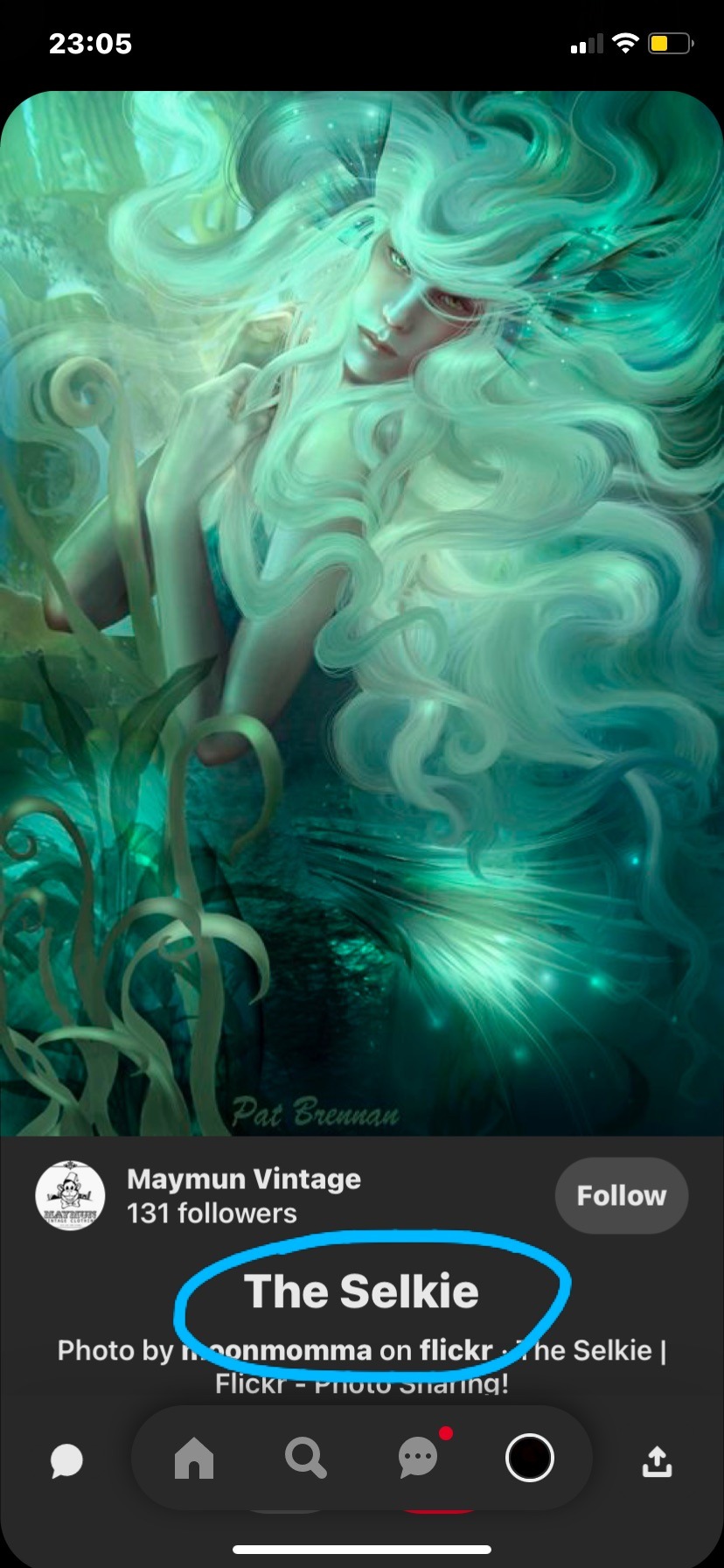
In Celtic and Norse mythology, selkies (also spelled silkies, sylkies, selchies) or selkie folk (Scots: selkie fowk) meaning "seal folk"[a] are mythological beings capable of therianthropy, changing from seal to human form by shedding their skin. They are found in folktales and mythology originating from the Northern Isles of Scotland.
To further back up this, here is another photo of a Selkie woman on SJM's pinterest.
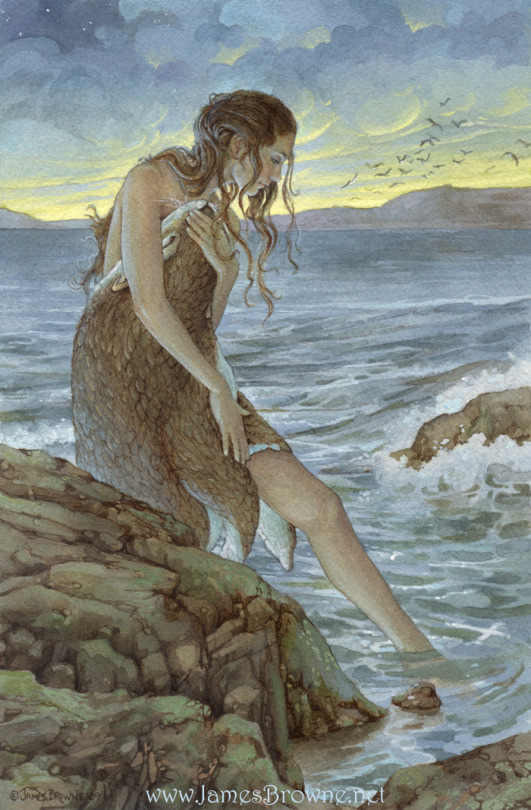
In David Thomson's book The People of the Sea, which chronicles the extensive legends surrounding the Grey Seal within the folklore of rural Scottish and Irish communities, it is the children of male selkies and human women that have webbed toes and fingers. When the webbing is cut, a rough and rigid growth takes its place.
Children born between man and seal-folk may have webbed hands, as in the case of the Shetland mermaid whose children had "a sort of web between their fingers",[25] or "Ursilla" rumoured to have children sired by a male selkie, such that the children had to have the webbing between their fingers and toes made of horny material clipped away intermittently.
“My twin had the webbed fingers of the nymphs—I don’t.”
Once again we see that Catrin posses traits of these water-creatures.
Keep in mind SJM has this on her board - The cover of Celtic folktales which has one story in particular of a 'sea-maiden' whom makes a deal with a mortal man.
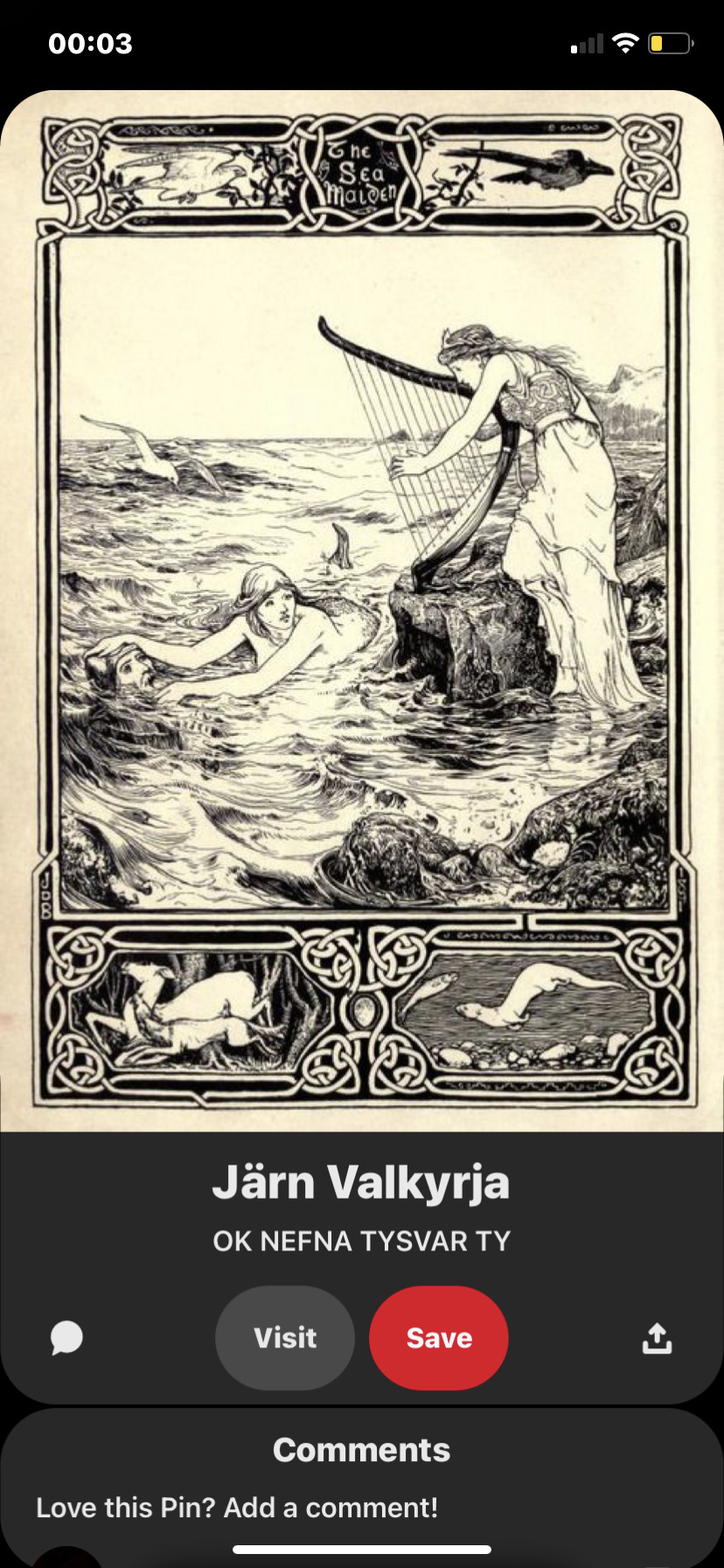
I proceeded to continue searching through the board and found this:
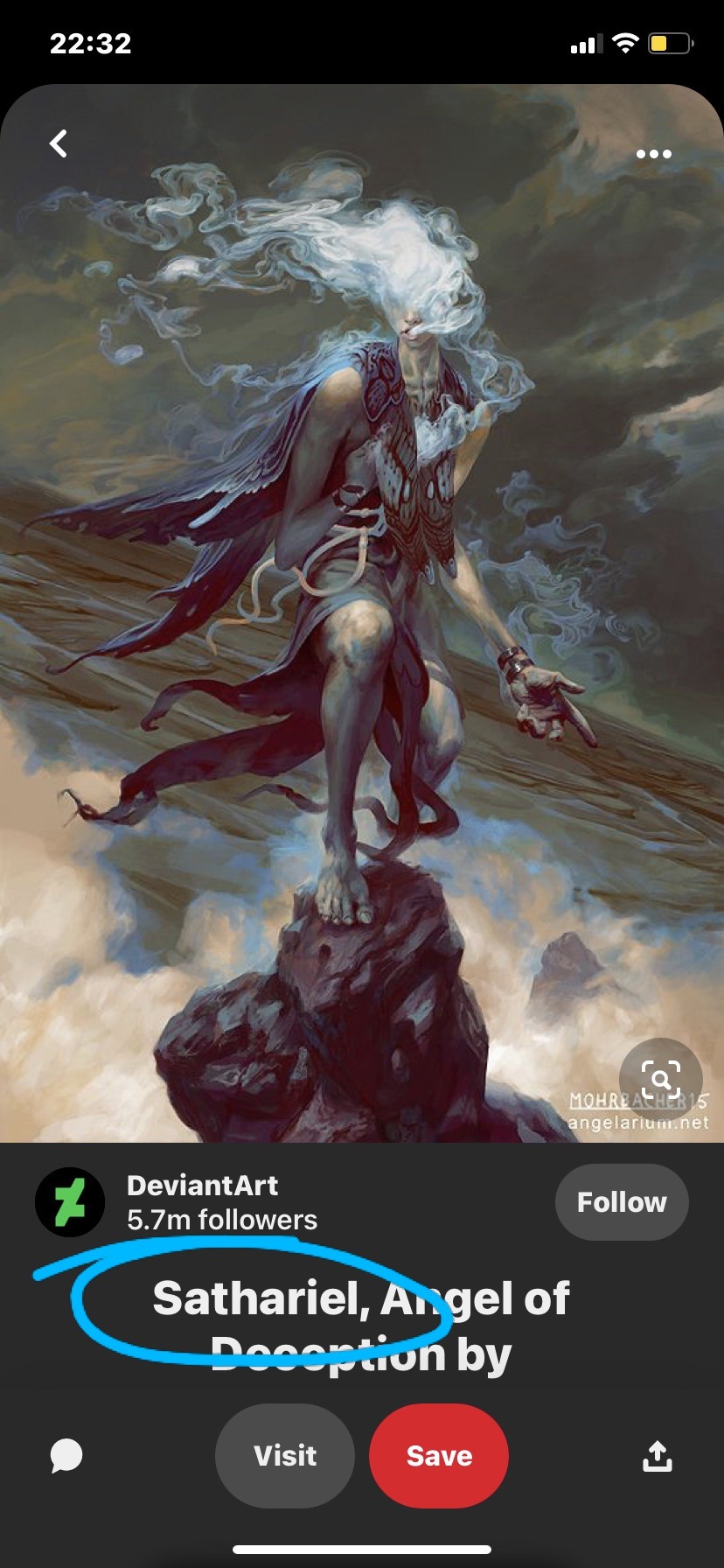
Sathariel (Hebrew סתריאל, Greek: Σαθιήλ) is one of the Qliphoth, corresponding to the Sephirah Binah on the kabbalistic Tree of life. It represents the Concealment of God, which hides the face of Mercy. The form of the demons attached to this Qliphah are of black veiled heads with horns, with hideous eyes seen through the veil, followed by evil centaurs.
'veiled heads with horns'
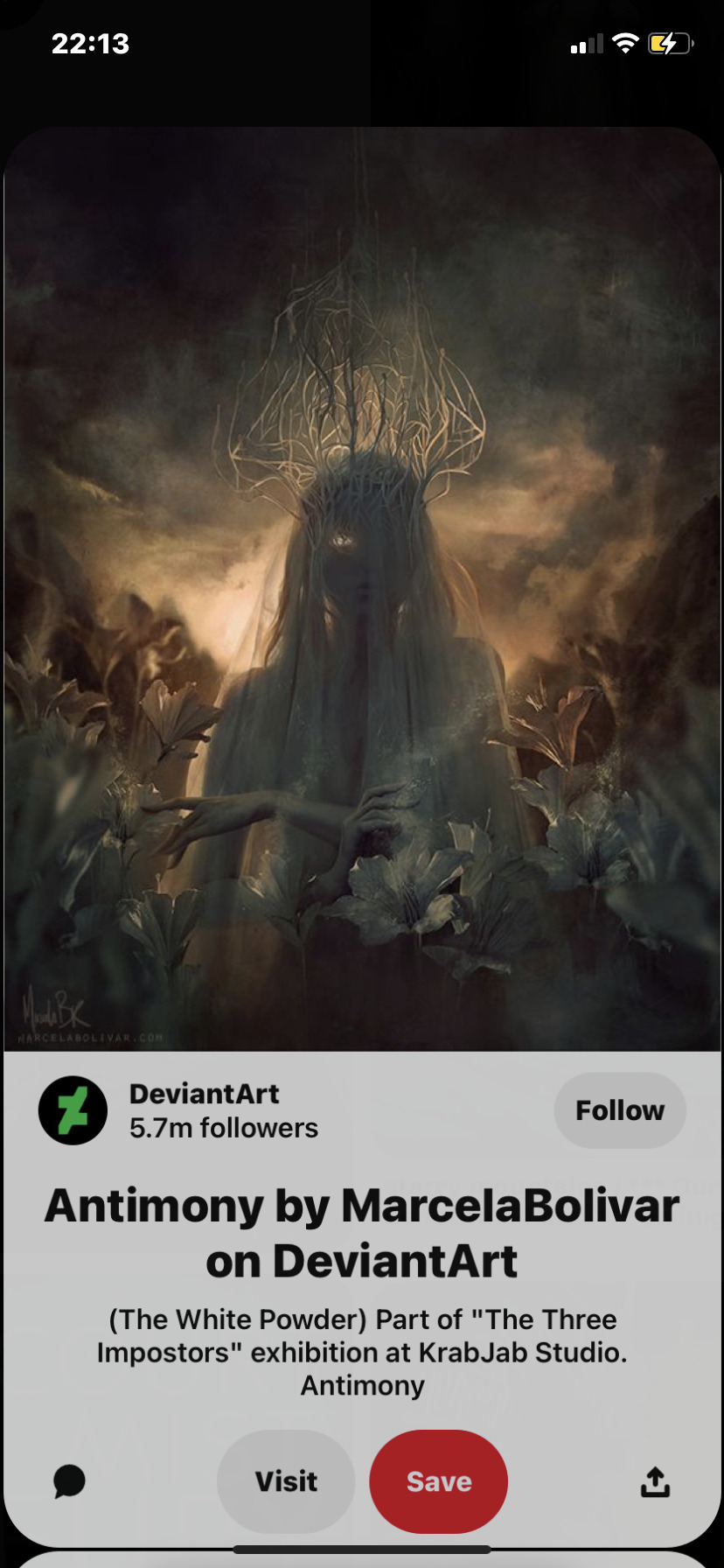
The Qliphoth are the shadow of the Sephirot, the chaotic force that exists when the Sephirah is unbalanced. Binah is the Sephirah that gives birth to form, the great mother of the cosmos, the eternal womb. Through her, the spiritual energy of Keter and Chokmah are woven into the matrix that eventually becomes matter.
In Jewish Kabbalistic cosmology of Isaac Luria, the qlippot are metaphorical "shells" surrounding holiness. They are spiritual obstacles receiving their existence from God only in an external, rather than internal manner.
Quiphoth (shadow of sephriot) = Shadowsinger
"shells" surrounding holiness = The shadows protected Azriel
They emerge in the descending seder hishtalshelus (Chain of Being) through Tzimtzum (contraction of the Divine Ohr), as part of the purpose of Creation.
Sathariel had black feathers on his wings and his body was shrouded in darkness.
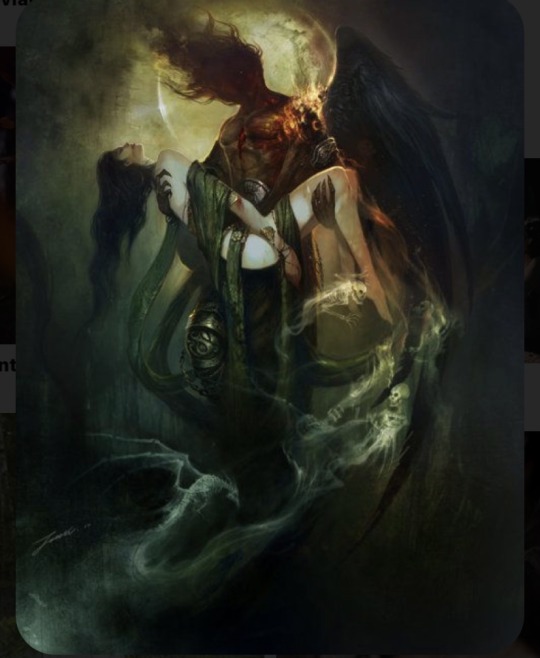
Honestly idk where tf im going with this 😩😩
I've put in far too much effort to delete it so i apologise if you've gotten all this way to be disappointed but
Conclusion:
Mor =/≠ Three fates
Gwyn = Heritage is sus? could be related to some interesting people
Azriel = Sathariel ?
If anyone has ideas to add pleaseeee tell me lol
i'll probably update this when i can be bothered
(FYI i love Gwyn and i'm not saying she's a siren or luring anyone but you've got to admit her grandmother is a sus lmao, especially with half the shit on SJM's pinterest.)
#i have not slept#this makes zero sense#acotar#azriel#azriel x gwyn#gwynriel#gwyneth berdara#azriel berdara#morrigan#acotar theory#acotar 6#acowaf#acomaf#acofas#acosf#a court of frost and starlight#a court of mist and fury#a court of silver flames#a court of wings and ruin#a court of thorns and roses
83 notes
·
View notes
Text
Poetic Patriarchy in Ireland — Part I: Poetry Against Women
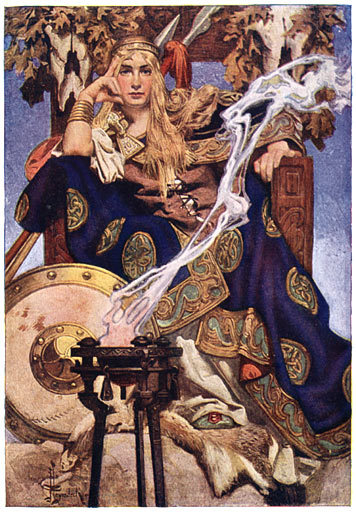
It is no secret that poetry offers a plethora of positive effects, be they as extreme as bringing someone out of depression or as simple as putting a smile on their face. Poetry has done a world of good for me and I would not be devoting so much of my spare time to it if it did not. However, we must acknowledge the fact that on multiple occasions in the past, poetry has shaped our world in a decidedly negative way. This can be seen clearly in the history of Ireland and the rights of women there. This blessay will cover how poetry led to the oppression of Irish women and will additionally give an overview of the female poets in Irish history. It will thus answer the oft-asked question, namely — why is the vast majority of Ireland’s internationally-renowned poets male? In my research I have not been able to find an essay exploring this question; I am thus honored to be the first.
During Celtic times, Irish women had more or less equal rights with men. There were many famous female role models for young girls and boys to look up to; these included the legendary queen Méabh and pagan goddesses such as Mórrígan. Unfortunately, the poems that would have been told during this time period were never written down, so we do not know how women were portrayed in them. It is probable that they would have been portrayed positively, considering the equality of gender roles present in that society.
Literacy reached Ireland in the fifth century and came alongside Christianity. While Christianity is often critiqued for its portrayal of women, Christian women in Ireland then were just as strong as their male counterparts. St. Brigid of Kildare is one of the most important women in Irish history; she was a nun — a profession usually associated with conservative tradition. Yet the teachings of the bible didn’t restrict her from being strong and independent. In fact, St. Brigid was close friends with one of Ireland’s first poets - Dubthach maccu Lugair. Dubthach and the other poets of the time were overwhelmingly not sexist. One of the most notable works of early Irish poetry is the prosimetrum by Táin Bó Cuailnge. The first recensions in this beautifully written collection are in celebration of Queen Méabh; she is treated as an equal — if not a superior — to her husband. Other strong female characters follow her, including the sovereignty goddess Macha, the villainous Morrígan, and Gráinne, who shows great power in her taking control of her own sexuality. These are only some of the most notable women to feature in these poems; were I to list them all, it would take all day!
In those days, composing poetry was one of the most lucrative professions in Ireland. This was due to the many kings across Ireland employing personal poets, known as ollams. These ollams were required to have hundreds of original poetic stories ready upon request for the king. What a shame that so many of these doubtlessly great pieces of work have been lost forever! These poems celebrated Irish royals, Biblical figures and figures from Celtic Mythology, including the strong women from each of these sources. My favourite piece is the poetic narrative An Banshenchas, written in 1147 by Gilla Mo Dutu Úa Caiside. This is the ultimate piece of feminist writing from the bardic period of poetry; it celebrates many notable women, from what the author considered to be the beginning of time with God’s Eve up to 1030 with Gormlaith ingen Murchada, a queen who stood as a symbol between the relationship of the native people of Ireland and the Viking settlers. This is not a celebration of one type of woman — we see so many different personalities and characterisations, from the somewhat passive Miriam to the perseverant and powerful Étaín. There is truly a woman in this collection for anyone to relate to, which is a testament to the feminist nature of a poem written 990 years ago in supposedly sexist times!
The most prestigious position a poet could get in this period of time would be Ollamh Érenn, or the Chief Ollam of Ireland. They would sit next to the high king of the country and be commended by all. Out of all of the documented ones, a single woman held the title — Uallach ingen Muinecháin. Since she was the first famous Irish female poet, one would think that her work would be taught to all, yet none of it survives. Were it not for her obituary in the Annals of Innisfallen, this trailblazer would have been forgotten entirely.
But ollams were not the only type of poets around; they were in fact only one subset of the poetry grouping known as filid. The type of filid that is best known today is a bard. Bards were actually the lowest position a poet could take, but the word has become synonymous with poet in the context of Ancient Ireland. Ancient Irish poetry is commonly referred to as bardic poetry, even by many scholars, despite the term's inaccuracy. It is often stated that it is unknown if any of these bards were female (Walker, 1786). However, the previously mentioned Muinech and Sadhbh Ó Mailchonaire are two factual exceptions. As with Muinech, Ó Mailchonaire’s works has been lost and the most famous record of her is her obituary. (Unknown, 1447) There are also some other potential candidates as ancient Irish poets, although once again these women’s works do not survive to this day. Agnes Carkill was a poet who performed for King James IV of Scotland in 1512 and there is speculation that she hailed from the Antrim family, Mac Fhergail, which would have been her maiden name (Bourke, 2002). Walker who spent years researching bards, speculates that the Caoine was written by a woman; most scholars agree with this opinion. The Caoine is a weeping lament, which was performed by women at funerals; its practice has spread from Ireland as far as Libya and Egypt. It is best known today for being the origin of the banshee myth. Women were also associated with the poetic form amhráin, which is a poem that’s sung, a practice which became prominent in the 16th century. It is also possible that many of the anonymous poems were written by women, especially since many of these poems feature distict feminist undertones, such as the spectacular St. Brigid’s Prayer which has since been translated by Brendan Kennelly.
It is also worth mentioning fictional female poets who appeared in ancient Irish stories. One of the characters who appears in Acallam na Senórach, the longest surviving work of medieval Irish literature, is Créide. She is described as a fine poet who invites males to a hostel in order to judge their poems. Créide is one of the first fictional poetry critics, but unfortunately she is not celebrated to the extent that she deserves to be. The Daughter of úa Dulsaine appears in a story by Cormac mac Cuilennáin (who died in 908), where she is one of the most popular poets in Ireland and travels around the country and abroad to show off her poetic prowess. Some suggest that this account is based off a true story and mac Cuilennáin just added the fantasy elements (Nicholson, 2016).
Another feminist fact about Ancient Irish poetry is that what we know today was as alliteration was named after women. It was referred to as “brichtu ban, brechtaib ban”, which roughly translates as “charms of women”. (Stifter, 2016) This technique is found in almost all surviving bardic poetry from its inception to its end. I do find it odd that such a prevalent term was named after women’s ability to speak in an enchanting manner, and yet that this very same society supposedly would not let these women write their hypnotic words down.
Compared to other countries Ireland has quite a lot of surviving poetry, but it’s only a small selection of what was written at the time. Many recorded works of poetry were destroyed in 686 AD after the Saxons raided Ireland, and again in 798 AD when the Vikings settled. Their cultures were more sexist than that of the Celts and their prejudice might be another reason why there are so few works that are credited to a woman from this period. The Saxons and Vikings were not completely able to destroy Celtic culture and bardic poetry, however, despite their best efforts; the bardic tradition managed to continue for hundreds of years after their arrival.
Poetry in Ireland began to shift during its Tudor conquest between 1529 and 1603. Queen Elizabeth brought the first English poets over to Ireland as she was claiming land, one of the most famous examples being Sir Walter Raleigh. This sexist poet’s writings did not have much influence on the Emerald Isle; in fact, in Éirinn he is most notable for the assumption that he planted the first potato in Ireland, even though this is pure speculation and it is far more likely this was done by a Spanish man or woman. (McNeill, 1949)
After England conquered the country in 1601 and Hugh O’Neill surrendered, bardic schools began to shut down. One of Ireland’s most infamous literary controversies — the Contention of the Bards — occurred during this time period. The bards attacked each other through verse, and it brought the end to their influence on the country. Bards were now just known as poets and it was becoming rare for poetry to be one's full-time occupation. Since there were no more kings, poets had to adapt and find patronage from the English settlers. Most of these settlers wanted their poems in English, not Irish, and thus a shift in language began to occur. Many refused to take part in it as it interfered with their Catholic beliefs; those wealthy enough migrated to Catholic countries in continental Europe to study poetry in college. Unfortunately, no one would fund these poor Catholic writers, so almost all of their work has been lost. As Protestant England was an extremely sexist society (even when it was ruled by a queen, ironically), women were discouraged from becoming poets as well.
The harsh Penal Laws put in place in Ireland by England forbade the teaching of the Irish language and poetry to Catholics. To circumvent this people pretended (often unsuccessfully) to be Protestant, or else taught children in secret 'hedge schools'. Hedge schools kept the tradition of Irish poetry alive, but if people were caught teaching in them or being secret poets they were arrested and punished. In Cork in 1584, 71 men an 1 woman were arrested. She was named Mary-ny-Dononoghue and dubbed by the presentation to the jury as “she-barde” and “rhymer”.
Before we get into the bleak sexism, I’d like to bring up two notable female poets who existed in the 17th and 18th centuries: Mary Monck and Charlotte Brooke. Both women come from wealthy backgrounds and married rich men, so they were able to avoid punishment as a result. Monck was multilingual and spoke English, Latin, Italian and Spanish. Many of her works can be found in the 1775 collection Poems by Eminent Ladies, which is definitely worth a read. Unfortunately for some reason in this collection Monck is miscredited as Mrs. Monk! Brooke was homeschooled by her father, who was also a writer. She was interested in the Irish language and became bilingual through hours of study. She not only wrote poems, but translated them too; yet despite being just as talented as her male counterparts, if not more, she was never accorded the same respect as them. Her poetry is rich in storytelling and employs a multitude of techniques, including an effective application of the most obvious ones: rhyme, repetition and rhythm. Monck is also very skilled in her writing; we will discuss possible reasons for why they have been forgotten by history later.
We see the first signs of widespread sexist poems in Ireland during this time frame. Epithalamia made their way to Eirinn in the writings of Dáibhí Ó Bruadair. While epithalamia in theory do not have to be sexist, almost all of the ones written during these times treated the women as inferior to men. There is also the establishment of poetry circles that would only allow male members; the most notable of these was Seán Ó Tuama’s and Andrias MacRait’s Maigue Poets. (Joyce, 1961)
Aodhagán Ó Rathaille’s aisling was invented in this time period and it constitutes one of the most uncomfortable forms of poetry I have ever witnessed. Aislings are set in dreams where women appear to the poet; often the woman appearing in such a dream is an anthropomorphic depiction of Ireland. This poetic brought the Mother Ireland concept into popular culture. Filmmaker Pat Murphy summed up it best when describing Mother Ireland in an excellent 1991 documentary about that subject: “[Mother Ireland] is not a positive image, the associations I have with it are not positive ones, I actually think it’s a wrong thing to do – to call a country after a woman – because it gets into those kind of areas where a country is to be won, or penetrated, or ploughed. And it means that women aren’t seen for themselves”. (Crilly, 1991)
Unfortunately, the concept of Mother Ireland did not stop at one poem; it was featured in several of Ó Rathaille’s aislings, as well as aislings written by other men. The concept transcends the aisling form and poets such as Thomas Moore began writing poems about Mother Ireland. The most notable of his poems about this oppressive concept is The Origin of the Harp, which inspired an equally sexist painting by Daniel Maclise in the 19th century. Even Roisin Dubh, which was an innocent poem about a man being in love with a woman, was weaponised by Owen Roe Mac Ward and turned into a poem about Mother Ireland. It has been widely sung by masses since the 18th century, unknowingly (or not) oppressing millions of women.
Well Tikki Troops, that was a lot to take in for part one, was it not? I decided split this blessay into parts because I did not want to overwhelm you all! The next blessay will cover 19th century poetry up today; despite covering a much shorter period, there are more poems that exist in its time frame. How will Irishwomen combat this Mother Ireland archetype — or will they at all? How will the most famous Irish poets, including Becket, Joyce, Heaney, Wilde and Yeats fit into this narrative? You’ll find out next time! But be patient with me as I try to perfect part two. :^)
Bibliography
Bourke, A. (2002) The Field Day Anthology of Irish Writing. NYU Press.
Cahill, S. E. (1983) ‘Reexamining the acquisition of sex roles: A social interactionist approach’, Sex Roles, 9(1), pp. 1–15. doi: 10.1007/BF00303105.
Collins, G. and Wickham, J. (2004) ‘Inclusion or Exploitation? Irish Women Enter the Labour Force’, Gender, Work & Organization, 11(1), pp. 26–46. doi: 10.1111/j.1468-0432.2004.00219.x.
Conroy, A. and Dickinson, T. (2018) ‘Male adolescent suicidality: a literature review’, Mental Health Practice, 21(8), pp. 50–55. doi: 10.7748/mhp.2018.e1293.
Crilly, A. (1991) Mother Ireland [Documentary Film]. Aired on Channel 4, U.K.
Hanlon, N. (2015) ‘The Role of Men in Gender Equality_Eire Report’. doi: 10.13140/RG.2.1.2011.5369.
History of the Potato (no date). Available at: https://www.potato.ie/history-of-the-potato/ (Accessed: 20 March 2020).
Joyce, M. (1961) ‘The Poets of Maigue’. The Capuchin Article.
McNeill, W. H. (1949) ‘The Introduction of the Potato into Ireland’, The Journal of Modern History, 21(3), pp. 218–222.
Meaney, G. (1991) Gerardine Meaney Sex and nation : Women in Irish Culture and Politics. ARTIC PRESS.
Morrison, T. G., Speakman, C. and Ryan, T. A. (2009) ‘Irish university students’ support for the human rights of lesbian women and gay men’, Journal of Homosexuality, 56(3), pp. 387–400. doi: 10.1080/00918360902728871.
Nicholson, T. (2016) A Biography of Story, A Brief History of Humanity. Troubador Publishing Ltd.
Owens, R. C. O. (1984) Smashing Times: The Irish women’s suffrage movement 1889-1922. ARTIC PRESS.
Patterson, R. A. (2015) ‘Women of Ireland: Change Toward Social and Political Equalityin the 21st Century Irish Republic’. Available at: https://web.archive.org/web/20151008154655/https://martindale.cc.lehigh.edu/sites/martindale.cc.lehigh.edu/files/Patterson.pdf (Accessed: 9 December 2019).
Stifter, D. (2016) ‘Metrical systems of Celtic traditions’, North-Western European Language Evolution 1983 & University Press of Southern Denmark, p. 58.
‘The Present Duty of Irishwomen: The Contribution of Irish Women as documented in the Archival Record’ (2016). Irish Archives Source.
Unknown (1447) ‘Annála Connacht’. Walker, J. (1786) Historical Memoirs of the Irish Bards. Dublin: Printed for author, by L. White.
8 notes
·
View notes
Text
Alright I got tagged by at least FIVE people, so... I’ll do EVERY set of questions, and the person who asked them is getting tagged so y’all have references as to who I’m referring to. (By the way, this is a SUPER LONG post.)
Let's get this goin’. Questions are all under the picture of Kelsey Colbert, and nicely divided by pictures of Kelsey Colbert:

@six-fragile-dreams:
1) How are you today? -Pretty chill. Pro’ly caught a cold, but I can get through it.
2) Favourite animals, colours and artist? -Owls -Monochrome Schemes/Galaxy Schemes/Pastel Pink/Charcoal Black -Kelsey Colbert, ‘nuff said.
3) What's your favourite conspiracy theory? -Aliens and call me lame for it but I will only believe either side with scientific evidence presented to me.
4) Do you like chocolate? -Yes, yes I do.
5) Coffee or Tea? -Coffee, all day, every day.
6) Favourite scent and flavour? -I love vanilla scented things. Also, cherry blossoms. -Coffee flavored things are nice, but really... anything overtly sweet like candied pecans is nice too.
7) What's your favourite genre? -Of literature? Poetry. -Of music? “Classical” (Baroque/Classical/Romantic) and Jazz
8) Biggest inspirations? -I’ll leave this one blank because... it is such a long list...
9) Favourite perfume or body spray? (or any other thing like that) -Japanese Cherry Blossom and Warm Vanilla Sugar from Bath & Body Works. Call me basic.
10) List your 5 favourite artists! -Kelsey Colbert -Taylor Swift -Lauren Daigle -Ariana Grande -Adele
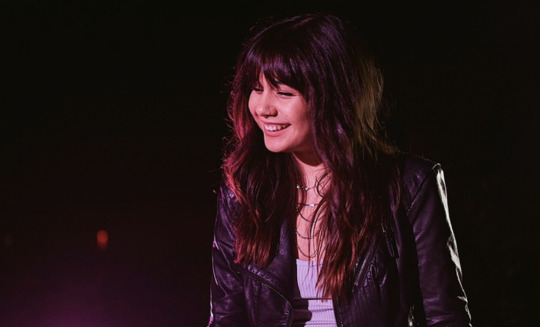
@frogs-in-clogs:
What instruments can you/ do you wish you could play? -I answered a whole ask about this. Click here for that.
Do you like audiobooks? -Nope. I prefer having the actual book in my hand.
Favourite board game? -I’m more of a card game gal. Magic the Gathering, Cardfight! Vanguard, FutureCard Buddyfight, or die by my blade.
Have you ever broken a bone? -Yep! I broke it playing softball. Broke the middle finger on my left hand.
Would you rather live in a city or a village? -A mix of both is the best thing for me. A not so populated city, but urbanized enough for me to be happy. But if I HAD to pick, probably a city.
Biggest inspiration? -Once again, list so long it'll take up twenty minutes of your time.
Do you listen to music when revising? -As in... writing stuff? Yeah, I do. I have a whole playlist dedicated to it.
Guilty pleasure music? - *sweats in salsa music*
How would you describe your accent? (Sidenote, how do you imagine my accent? I'm intrigued) -I... don’t know how to describe what a Puerto Rican sounds like?
Do you believe in aliens? -Scroll up, I ain’t answering again.

@boombiotch:
1. Favorite musical, if you listen to any? -Of all time? Cats. I LOVE Andrew Lloyd Webber scores.
2. Favorite ice cream flavor? -Butter Pecan
3. Favorite OC, if you have one? -The high school student who wants to sometimes slap her best friends with her binder, 17 year old Meghan Isabella Pereira.
4. If you could learn any language, what would you choose? -Irish.
5. Moon or the sun? -I like warmth, so the sun. But, I am a sucker for the moon too.
6. Do you have a favorite flower? -Hibiscus!
7. Are you a morning person? -Nope.
8. Do you like to write? - *sweats in Ao3 and this account*
9. Do you believe in ghosts? -Yes.
10. Ayy what do you think of me? *awkward fingerguns* -You’re honestly a total sweetheart, and I am very glad you’re in my life!
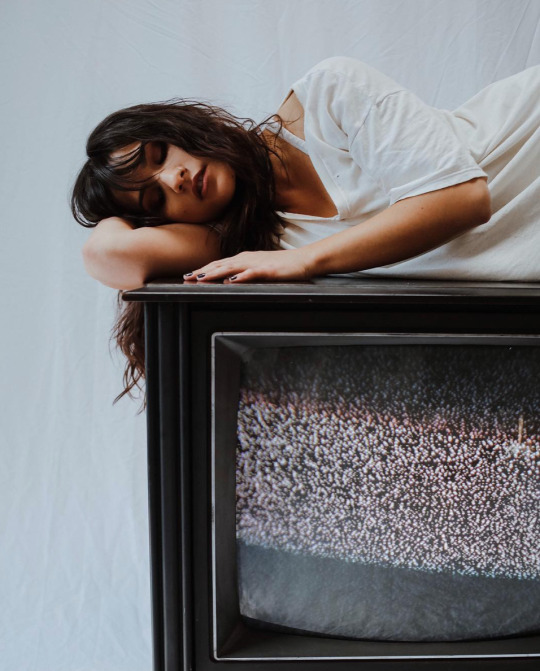
@bchcadcd:
1.) What’s your favorite memory? -A tie between my high school graduation in 2017, and being told I’d be playing Helga in PUFFS the Play.
2.) Do you get attached to people easily? -Yes, yes, yes.
3.) Favorite mythological deity? -The Mórrígan, Demeter, Persephone, and Shiva.
4.) Favorite superhero? -Comics: Spider-Man (Tom Holland’s Peter Parker), Supergirl (Melissa Benoist’s Kara Danvers) -Anime: Mt. Lady / Rabbit Hero, Mirko / The R Rated Hero, Midnight
5.) Do clouds have feelings? -I believe so.
6.) Favorite childhood book series? -Warriors
7.) What’s your love language? -The little things. Noticing how someone’s eyes light up when they’re happy, or the little scratchiness of their voice when they talk. Call me hopeless, but I value those little things.
8.) Do you put any stock into personality indicators? (MBTI types/Hogwarts houses/Zodiac signs/etc.) -Not too much, but it’s nice to know it. (If anyone is curious ‘bout me: INFJ-T / Hufflepuff / Virgo Sun - Pisces Moon - Gemini Rising )
9.) Favorite genre of show? -If we mean live theatre? Opera. Nothing against musicals, but opera draws more emotion.
10.) Favorite cast member from six? -Studio: Aimie Atkinson -Broadway: Samantha Pauly (Hon. Mention: Andrea Macasaet) -1st UK Tour/West End: Natalie Paris (Hon. Mention: Maiya Quansah-Breed) -West End: Courtney Bowman (Hon. Mention: Jarnéia Richard-Noel) -2nd UK Tour: Jodie Steele -Bliss 1.0: Alicia Corrales-Connor -Bliss 2.0: Megan Leung -Breakaway: Amy Bridges -Australia/New Zealand: Kala Gare (Hon. Mention: Courtney Monsma)
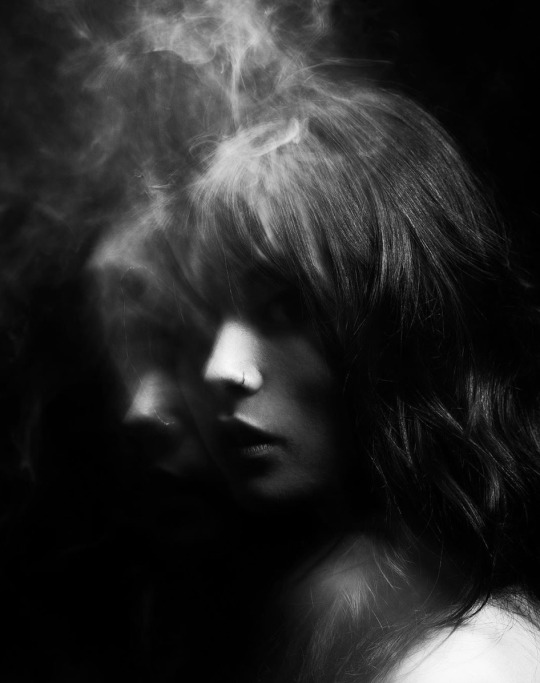
@one-time-i-jumped-off-a-cliff:
1. What’s your phone background? -Aimie Atkinson lockscreen, Millie O’Connel home screen.
2. Do you have any siblings? -Two older brothers. I’m the youngest of three.
3. Go-to party trick? -Don’t have one. I don’t go out much.
4. Voice type? -Mezzosoprano, with emphasis on Alto voicing. (If you speak of music, that is.)
5. Are/were you one of the popular kids in middle school? -Nope. I was the loner. The one everyone was scared would snap and actually do atrocious things. Little did people realize though, I’m actually a sweetheart. They’re all trying to be my friends now, I just keep denying ‘em.
6. If I gave you a puppy right now, what would you name it? -Shadow.
7. How many languages can you communicate in some way in? -Three, four if you count Morse Code. (Spanish/English/Japanese)
8. Do you play any sports? -Used to play Tennis, used to play Softball. -Also did Marching Band. (Fight me on the definition, I dare you.)
9. Opinion on Dear Evan Hansen? -Brings a good light on mental health issues, but it needed a better approach to it as well.
10. What was your first fandom on tumblr? -In technicality... In the Heights. I didn’t really see myself involved with fandoms until much more recently.
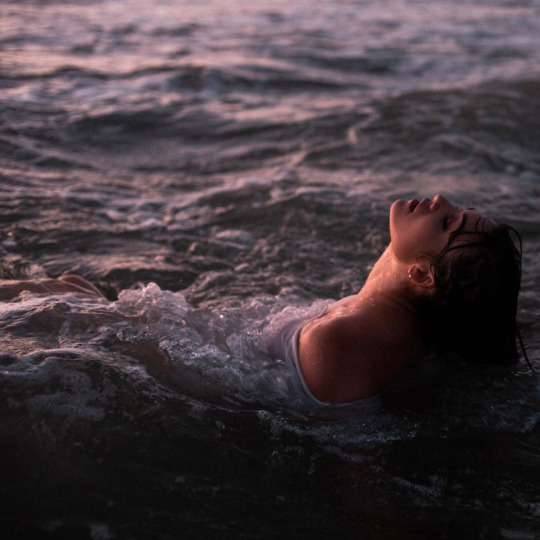
My questions to you! Feel free to say I tagged you!
Summer or Winter?
The beach, or the mountains?
There’s a red button in front of you. You press it, and you receive a million dollars. But, someone random in the world dies. Do you press it?
Favorite fashion trend/style?
Favorite all-time lyric from a song?
Favorite sound from nature?
Who’s your favorite YouTuber, who are they, and what do they do?
What’s your Hogwarts house?
What’s your favorite work by William Shakespeare? (Sonnets and all included, not just limited to stage plays.)
If you got thrown into a fantasy world, what kind of powers would you like to have?
4 notes
·
View notes
Photo

⭐️⚡️Happy Monday! Here is my painting of The Morrigan to start off your week! See below for some info about this goddess. The original painting sold, but I do have prints available in my Etsy shop, link in bio. “The Morrígan or Mórrígan, also known as Morrígu, is a figure from Irish mythology. The name is Mór-Ríoghain in Modern Irish, and it has been translated as "great queen" or "phantom queen". The Morrígan is mainly associated with war and fate, especially with foretelling doom, death or victory in battle. In this role she often appears as a crow, the badb.She incites warriors to battle and can help bring about victory over their enemies. The Morrígan encourages warriors to do brave deeds, strikes fear into their enemies, and is portrayed washing the bloodstained clothes of those fated to die.She is most frequently seen as a goddess of battle and war and has also been seen as a manifestation of the earth- and sovereignty-goddess,chiefly representing the goddess's role as guardian of the territory and its people.” https://www.instagram.com/p/CU5NKH0lap6/?utm_medium=tumblr
0 notes